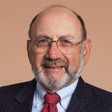Manufacturing Bouncing Back
America's manufacturing sector is recovering and poised for a modest rebound. The question is how much?
The long decline in America's manufacturing sector finally is over. During the past two years, manufacturing output has regained almost three-quarters of the stunning 20% drop it took during the Great Recession. And manufacturing firms have pared their production costs and improved their efficiency. Now they are poised for a comeback.
The Manufacturers Alliance for Productivity and Innovation, the industry's trade group, predicts that manufacturing output will rise 2% this year, 3.3% in 2014 and 4.2% in 2015 -- a modest rebound, but headed in the right direction. Some industry experts see decidedly better days after that, and talk of a renaissance in U.S. manufacturing fills the air.
The sweeping structural changes that manufacturing companies have undergone are putting U.S. factories back in the game. Over the past few years, U.S. productivity has improved, wages have remained flat, and automation has replaced many human workers. Labor unions have lost much of their clout. Other costs have fallen sharply: Interest rates are low. Oil and gas supplies have mushroomed, while energy prices, particularly for natural gas, have plunged. And the dollar's value has declined, making U.S. exports less expensive and foreign imports more costly to buy.
From just $107.88 $24.99 for Kiplinger Personal Finance
Be a smarter, better informed investor.

Sign up for Kiplinger’s Free Newsletters
Profit and prosper with the best of expert advice on investing, taxes, retirement, personal finance and more - straight to your e-mail.
Profit and prosper with the best of expert advice - straight to your e-mail.
At the same time, rising wages in China, combined with the spread of robotics here at home, are eroding the attractiveness of outsourcing production to low-wage countries. The nuclear disaster in Fukushima, Japan, gave companies pause about global supply chains. The upshot: A growing number of U.S. firms have begun to bring production home.
"The U.S. has gotten more competitive," says Harold L. Sirkin, a Boston Consulting Group senior partner who watches manufacturing. He predicts the U.S. will create up to 1 million manufacturing jobs over the next 10 years. "The U.S. will become a manufacturing center, and not just for American companies," he says.
Sirkin foresees visible gains in overall manufacturing output in industries such as computers and electronics, appliances and furniture, chemicals, fabricated metals, plastics and rubber, and automobiles and automotive parts. "We're really seeing signs of a turnaround," he says.
Even so, most analysts expect that manufacturing won't take off for another couple of years, at least. The U.S. economic recovery continues to be anemic, without enough oomph to propel factories at full speed. And the global economy is lagging further, so manufacturers can't count on exports to spur production at home.
"The missing ingredient is demand. Everything else is falling into place for manufacturing," says Mike Montgomery, an economist at IHS Global Insight in Lexington, Massachusetts. "The structural issues that manufacturing faced before have almost entirely sorted themselves out. But demand isn't growing fast enough."
And the golden days of the 1960s and early 1970s aren't likely to come back anytime soon. The resurgence will be modest. Large multinationals will continued to retain large plants abroad. At best, the gains will replace much of the employment losses incurred during the recession.
"You can say that the worst is over for American manufacturing," says Barry P. Bosworth, a Brookings Institution economist who keeps tabs on manufacturing. "The loss in factories will be slower than it's been over the past three decades because we no longer have to shed low-skill jobs and increase our efficiency in order to compete."
Even so, while U.S. manufacturing has come a long way in adjusting to the post-1970s world, it still faces some daunting challenges. Already, factories are having difficulty finding skilled workers for today's manufacturing jobs, and the problem will intensify as the work force ages. So far, the U.S. has done little to address it.
And while innovation in this country is going strong in a few high-profile scientific fields, such as nanotechnology and computer science, translating that into manufacturing is going more slowly than economists say is needed. Labor Department figures show, for example, that the number of new start-up firms has been declining steadily since 1998.
Profit and prosper with the best of Kiplinger's advice on investing, taxes, retirement, personal finance and much more. Delivered daily. Enter your email in the box and click Sign Me Up.

-
 Dow, S&P 500 Slip on December Rate Cut Worries, Nvidia Boosts Nasdaq: Stock Market Today
Dow, S&P 500 Slip on December Rate Cut Worries, Nvidia Boosts Nasdaq: Stock Market TodayNvidia became the first company ever to boast a $5 trillion market cap, but it wasn't enough to lift the Dow and the S&P 500.
-
 Where You Choose to Stash $100k Now Comes with a Big Opportunity Cost
Where You Choose to Stash $100k Now Comes with a Big Opportunity CostThe Fed recently cut rates. Here's where to maximize your savings while rates remain higher.
-
 Will AI Videos Disrupt Social Media?
Will AI Videos Disrupt Social Media?The Kiplinger Letter With the introduction of OpenAI’s new AI social media app, Sora, the internet is about to be flooded with startling AI-generated videos.
-
 What Services Are Open During the Government Shutdown?
What Services Are Open During the Government Shutdown?The Kiplinger Letter As the shutdown drags on, many basic federal services will increasingly be affected.
-
 The Economy on a Knife's Edge
The Economy on a Knife's EdgeThe Letter GDP is growing, but employers have all but stopped hiring as they watch how the trade war plays out.
-
 Apple Readies for AI Upgrade with New iPhones
Apple Readies for AI Upgrade with New iPhonesThe Kiplinger Letter The tech giant has stumbled when it comes to artificial intelligence, but a new batch of iPhones will help it make headway.
-
 Japan Enters a New Era of Risk and Reform
Japan Enters a New Era of Risk and ReformThe Kiplinger Letter Japan has entered a pivotal moment in its economic history, undertaking ambitious policy and structural reforms to escape from decades of stagnation.
-
 How Consumers Are Tinkering with Cutting-Edge AI
How Consumers Are Tinkering with Cutting-Edge AIThe Kiplinger Letter Companies launching artificial intelligence tools are jostling for consumer attention. Some products are already building a deep connection with users.
-
 After Years of Stagnant Growth, Hope Emerges for EU Economy
After Years of Stagnant Growth, Hope Emerges for EU EconomyThe Kiplinger Letter Can a German fiscal push outweigh French political peril?
-
 Small Businesses Are Racing to Use AI
Small Businesses Are Racing to Use AIThe Kiplinger Letter Spurred on by competitive pressures, small businesses are racing to adopt AI. A recent snapshot shows the technology’s day-to-day uses.
